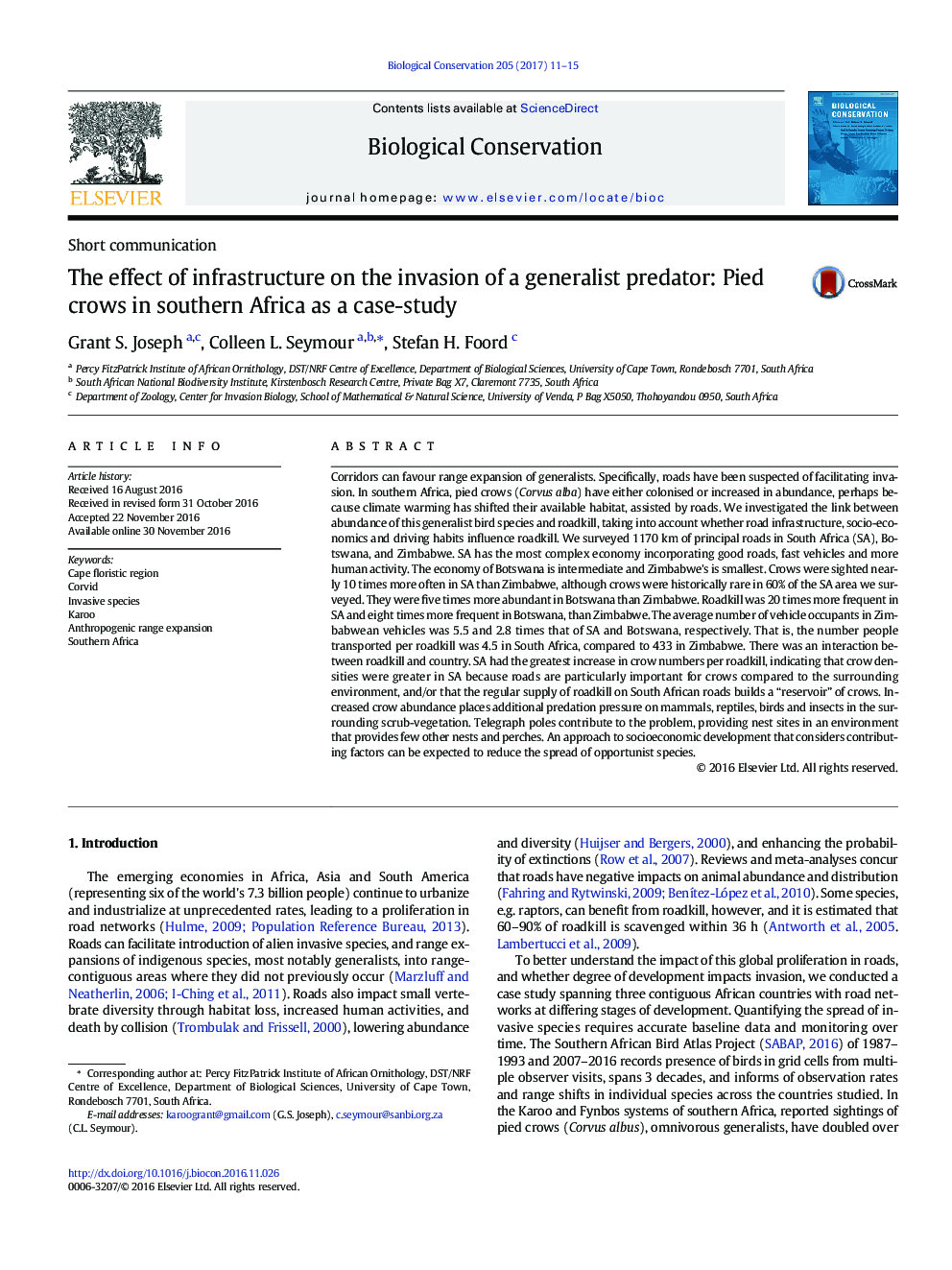| کد مقاله | کد نشریه | سال انتشار | مقاله انگلیسی | نسخه تمام متن |
|---|---|---|---|---|
| 5743251 | 1617897 | 2017 | 5 صفحه PDF | دانلود رایگان |
- Generalist predators invade areas, aided by road-linked infrastructure and roadkill.
- We compared roads in three southern African countries with differing infrastructure.
- Crows were 20 times more abundant in the richest than poorest country.
- Crow numbers increased significantly more with roadkill in the richest country.
- Sustainable development should consider aspects of road networks that help invasion.
Corridors can favour range expansion of generalists. Specifically, roads have been suspected of facilitating invasion. In southern Africa, pied crows (Corvus alba) have either colonised or increased in abundance, perhaps because climate warming has shifted their available habitat, assisted by roads. We investigated the link between abundance of this generalist bird species and roadkill, taking into account whether road infrastructure, socio-economics and driving habits influence roadkill. We surveyed 1170Â km of principal roads in South Africa (SA), Botswana, and Zimbabwe. SA has the most complex economy incorporating good roads, fast vehicles and more human activity. The economy of Botswana is intermediate and Zimbabwe's is smallest. Crows were sighted nearly 10 times more often in SA than Zimbabwe, although crows were historically rare in 60% of the SA area we surveyed. They were five times more abundant in Botswana than Zimbabwe. Roadkill was 20 times more frequent in SA and eight times more frequent in Botswana, than Zimbabwe. The average number of vehicle occupants in Zimbabwean vehicles was 5.5 and 2.8 times that of SA and Botswana, respectively. That is, the number people transported per roadkill was 4.5 in South Africa, compared to 433 in Zimbabwe. There was an interaction between roadkill and country. SA had the greatest increase in crow numbers per roadkill, indicating that crow densities were greater in SA because roads are particularly important for crows compared to the surrounding environment, and/or that the regular supply of roadkill on South African roads builds a “reservoir” of crows. Increased crow abundance places additional predation pressure on mammals, reptiles, birds and insects in the surrounding scrub-vegetation. Telegraph poles contribute to the problem, providing nest sites in an environment that provides few other nests and perches. An approach to socioeconomic development that considers contributing factors can be expected to reduce the spread of opportunist species.
Journal: Biological Conservation - Volume 205, January 2017, Pages 11-15
